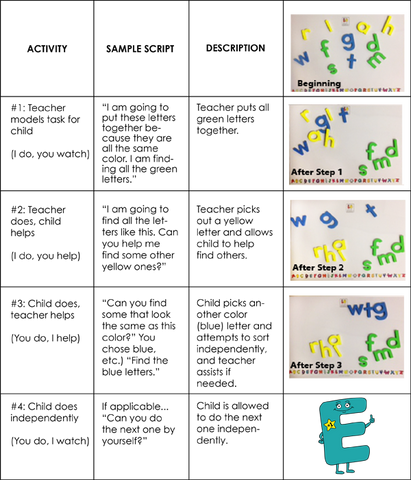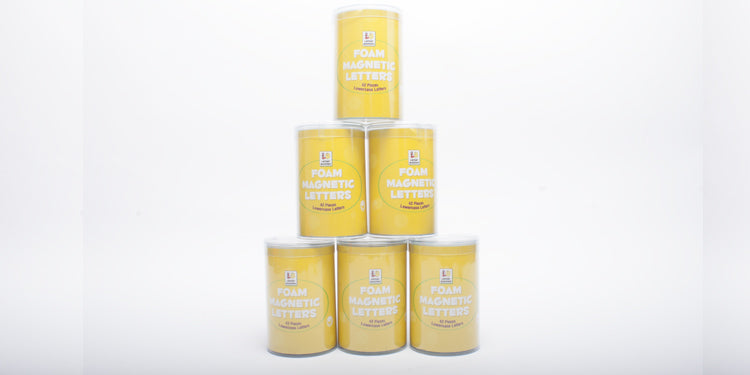 This is the first in a progressive series of posts
by special guest blogger Paula Dugger that first ran in 2013 on ways to use magnetic letters for cognitive development and the early stages of literacy. You can see the rest of the posts in the series by clicking these links:
2
,
3
,
4
,
5
,
6
,
7
,
8
,
9
,
10
.
This is the first in a progressive series of posts
by special guest blogger Paula Dugger that first ran in 2013 on ways to use magnetic letters for cognitive development and the early stages of literacy. You can see the rest of the posts in the series by clicking these links:
2
,
3
,
4
,
5
,
6
,
7
,
8
,
9
,
10
.
Magnetic Letters and Cognitive Development
Activities using magnetic letters can help in cognitive development both consciously and unconsciously in young children. The letters are colorful, three-dimensional, and they lend themselves to movement and touch. Letters are a part of the print we see around us in the world. Using soft foam letters (Hameray offers a great set of uppercase and lowercase foam letters), children can learn many skills:
- To categorize by sorting, matching, and classifying
- To differentiate colors, shapes, and letters
- The concept of letters by name, sight, shape, and sound
- The concept of words by sight or by putting together sounds to form words
My series of guest blogs will be on specific activities that use magnetic letters to help with the cognitive development of preschoolers. No activity should exceed five to ten minutes depending upon the age, ability, and interest of the child. These activities should be seen as fun games, and each will be a little more rigorous than the one before. The blogs will be divided into four groups:
- Teaching colors
- Teaching similarities and differences (or comparing and contrasting)
- Teaching the alphabet (letter names)
- Word analysis (making words)
Lesson #1: Teaching Colors
Colors are among the first ways young children make distinctions between things in the world. Color words are also some of the first words used to describe things. Whenever you introduce a task, make sure the child understands what to do. Below is a great framework that demonstrates how to scaffold an activity by modeling and gradually releasing the activity to the child.

Materials used in this Activity: Lowercase Foam Magnetic Letters and Magnetic Whiteboard

Activity 1: Sorting letters of the same color
The teacher or parent’s language will be important in these activities for defining the color names and developing oral language. Place ten to fifteen different letters of various colors out
for the child to see.

- Paula Dugger
Paula Dugger has a B.S., M.Ed. and Reading Specialist Certification from The University of Texas at Austin and Reading Recovery training through Texas Woman’s University. Paula does educational consulting and training through Dugger Educational Consulting, LLC and can be contacted at np.dugger@att.net
Paula and her husband Neil are parents to two wonderful daughters, Alicean and Ashley, two son-in-laws Kevin and Patrick, and grandparents to Carter. She also raises registered Texas Longhorns on the weekends. The longhorn cattle are featured in her first book published by Hameray Publishing Group, titled Longhorns .
If you'd like to order some magnetic foam letters to try out this activity for yourself, you can find them on the Hameray website . If you're teaching at this stage of literacy, you might also be interested in the Letter Buddies books. Click on the images below to see some key features of the series!




















































